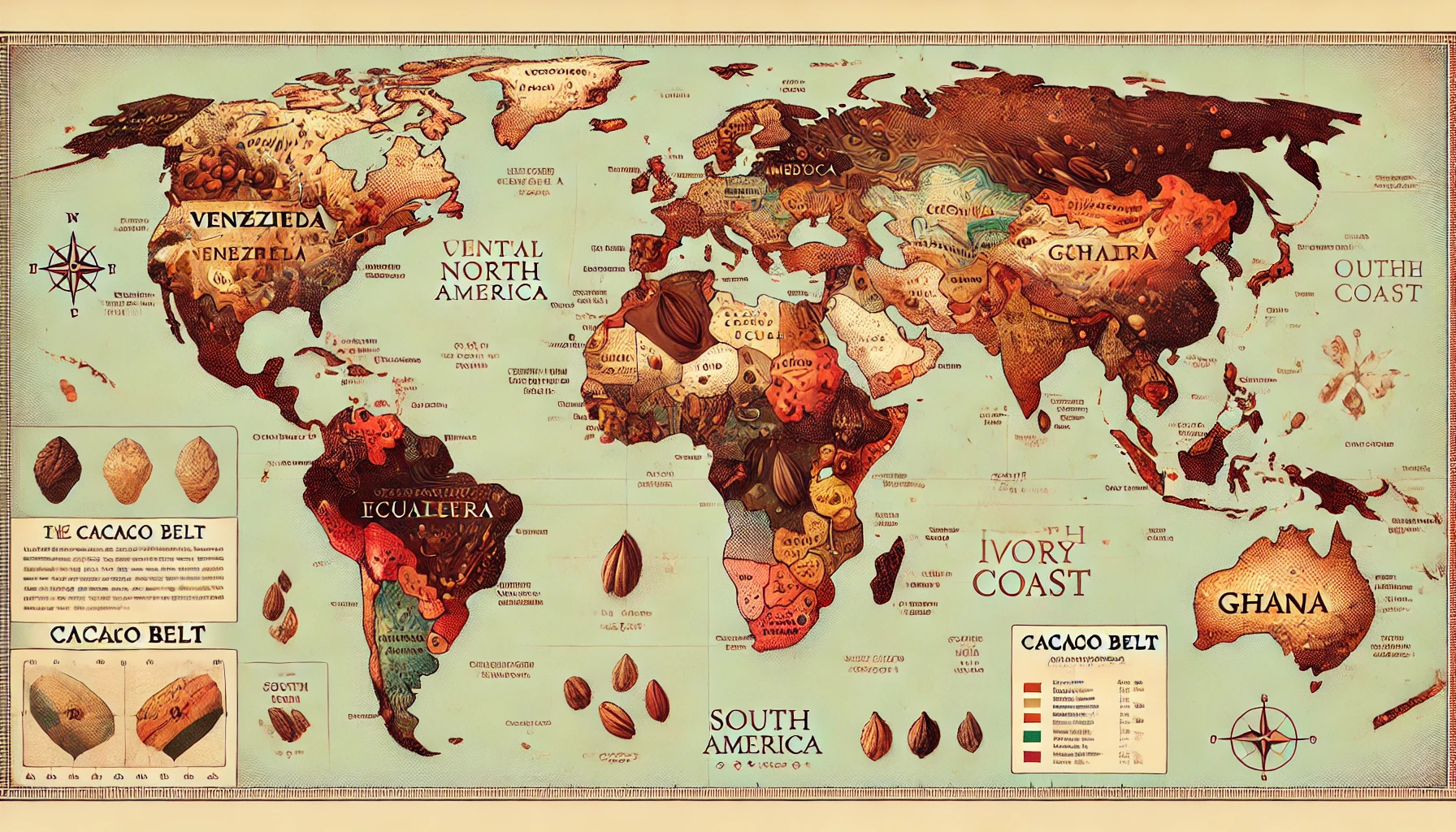Complete Chocolate Guide
Types, Uses, and Origins Explained
Comprehensive Guide to Chocolate Types
Dark Chocolate
Cacao Content: 70-100%
Rich in bitterness and intensity, dark chocolate offers the pure essence of cacao. It is packed with antioxidants and offers numerous health benefits.
Features
- Strong bitterness
- High in health benefits
- Pure cacao flavor
Milk Chocolate
Cacao Content: 25-45%
Known for its smooth, creamy texture and balanced sweetness, milk chocolate is the most popular variety worldwide.
Features
- Rich and creamy texture
- Well-balanced sweetness
- Versatile for various uses
White Chocolate
Made with Cocoa Butter
Crafted from cocoa butter, milk, and sugar, white chocolate has a sweet, creamy flavor. It is a favorite for baking and decorating.
Features
- Rich dairy flavor and sweetness
- Silky smooth texture
- Ideal for decorations
Chocolate Shapes and Their Uses
Chocolate Bar
Names Around the World
- 🇫🇷 French: Tablette de chocolat
- 🇬🇧 English: Chocolate bar / Chocolate tablet
- 🇩🇪 German: Schokoladentafel
- 🇮🇹 Italian: Tavoletta di cioccolato
- 🇪🇸 Spanish: Tableta de chocolate
- 🇧🇪 Belgian (Dutch): Chocoladereep
💡 Fun Fact:
The word “tablet” originates from the Latin word “tabula,” meaning a flat board. In Europe, traditional chocolate-making involved molding chocolate into flat bars, which is why many languages use terms meaning “tablet” or “bar.”
Regional Characteristics
- 🇨🇭 Switzerland: Larger tablets with intricate patterns
- 🇧🇪 Belgium: Thin designs with delicate dividers
- 🇯🇵 Japan: Smaller sizes preferred with a variety of seasonal flavors
Truffle Chocolate
Names Around the World
- 🇫🇷 French: Truffe en chocolat
- 🇬🇧 English: Chocolate truffle
- 🇩🇪 German: Schokoladentrüffel
- 🇮🇹 Italian: Tartufo di cioccolato
- 🇪🇸 Spanish: Trufa de chocolate
💡 Fun Fact:
The name “truffle” comes from its resemblance to the luxurious black truffle. It is believed to have been invented in 1895 by French pastry chef Louis Dufour.
Regional Characteristics
- 🇫🇷 France: Ganache-based with cocoa powder coating
- 🇧🇪 Belgium: Praline-based with a chocolate coating
- 🇨🇭 Switzerland: Rich in cream for a smoother texture
Praline Chocolate
Names Around the World
- 🇫🇷 French: Praliné / Chocolat praliné
- 🇬🇧 English: Praline chocolate
- 🇩🇪 German: Pralinenschokolade
- 🇮🇹 Italian: Cioccolato al pralinato
- 🇧🇪 Belgian (Dutch): Praliné chocolade
💡 Fun Fact:
The name “Praline” originates from César de Choiseul du Plessis-Praslin, a French nobleman. His chef invented caramelized almonds, marking the beginning of praline as we know it today.
Regional Characteristics
- 🇧🇪 Belgium: Developed into small filled chocolate treats
- 🇫🇷 France: Focus on caramelized nut paste
- 🇺🇸 Southern USA: Features pecans in a unique style
Bonbon Chocolat
Names Around the World
- 🇫🇷 French: Bonbon chocolat
- 🇬🇧 English: Chocolate bonbon / Filled chocolate
- 🇩🇪 German: Schokoladenpraline
- 🇮🇹 Italian: Cioccolatino ripieno
💡 Fun Fact:
The term “Bonbon” is derived from the French word “bon,” meaning “good,” repeated for emphasis. It signifies something “very good” and is a popular choice for luxurious gifts.
Regional Characteristics
- 🇧🇪 Belgium: Artistic decorations and diverse fillings
- 🇫🇷 France: Delicate flavors with elegant designs
- 🇨🇭 Switzerland: A blend of traditional recipes and modern innovations
Luxury Chocolate Types and Their Differences
| Type | Main Features | How It’s Made |
|---|---|---|
| Truffle Chocolate truffle | • Spherical or irregular shape • Coated with cocoa powder or chocolate • Ganache-filled interior | 1. Make ganache with cream and chocolate 2. Chill and set 3. Shape into balls 4. Coat with cocoa powder |
| Praline Praline | • Includes caramelized nuts • Paste-like filling • Coated with chocolate | 1. Caramelize nuts 2. Crush into a paste 3. Mix with chocolate 4. Shape and coat |
| Bonbon Chocolat Bonbon chocolat | • Thin chocolate shell with filling • Decorative and artistic exterior • Variety of shapes and fillings | 1. Pour chocolate into molds 2. Drain excess to form shells 3. Fill with filling 4. Seal with chocolate |
Chocolate Guide by Cacao Origins
What is the Cacao Belt?

The “Cacao Belt” refers to regions located between 20° north and 20° south of the equator. These areas provide the ideal climate for growing cacao, with temperatures between 20–30°C and humidity levels above 80%.
Major Cacao-Producing Regions:
- 🌍 West Africa: Approximately 70% of global production
- 🌎 Latin America: About 15% (key source of high-quality cacao)
- 🌏 Southeast Asia: Around 15% (Indonesia being a major producer)
Latin America
🇻🇪 Venezuela
Main Variety: Criollo (premium variety)
Flavor Profile: Fruity and delicate aroma with a smooth texture
Famous Region: Chuao (renowned for its exceptional cacao)
🇪🇨 Ecuador
Main Variety: Nacional (also known as Arriba)
Flavor Profile: Floral aroma with citrus notes
Special Notes: Known for producing the premium “Arriba” cacao
African Region
🇬🇭 Ghana
Main Variety: Forastero
Flavor Profile: Rich and classic taste with consistent quality
Notable Points: 2nd largest producer globally with strict quality control
🇨🇮 Côte d’Ivoire
Main Variety: Forastero
Flavor Profile: Bold flavor with a deep richness
Notable Points: Largest producer in the world (about 40% of global production)
Asia & Oceania Region
🇮🇩 Indonesia
Main Varieties: Forastero, Trinitario
Flavor Profile: Smoky aroma with spicy notes
Notable Points: Largest producer in Asia
Characteristics of Major Cacao Varieties
1. Criollo (Premium Variety)
- Less than 5% of global production
- Delicate aroma and flavor
- Susceptible to diseases, making cultivation challenging
2. Forastero (Most Common)
- Accounts for about 80% of global production
- Resistant to diseases and high yield
- Standard flavor profile
3. Trinitario (Hybrid Variety)
- Hybrid of Criollo and Forastero
- Balanced resistance to diseases and quality
- Distinct aroma and flavor
Sustainability and Ethical Sourcing
Major Certification Programs:
- 🌱 Fairtrade Certification
- 🌿 Rainforest Alliance Certification
- 🌍 UTZ Certification
These certifications ensure fair wages for producers, sustainable farming methods, and the prevention of child labor. When choosing chocolate, look for these certification marks to support more ethical consumption.